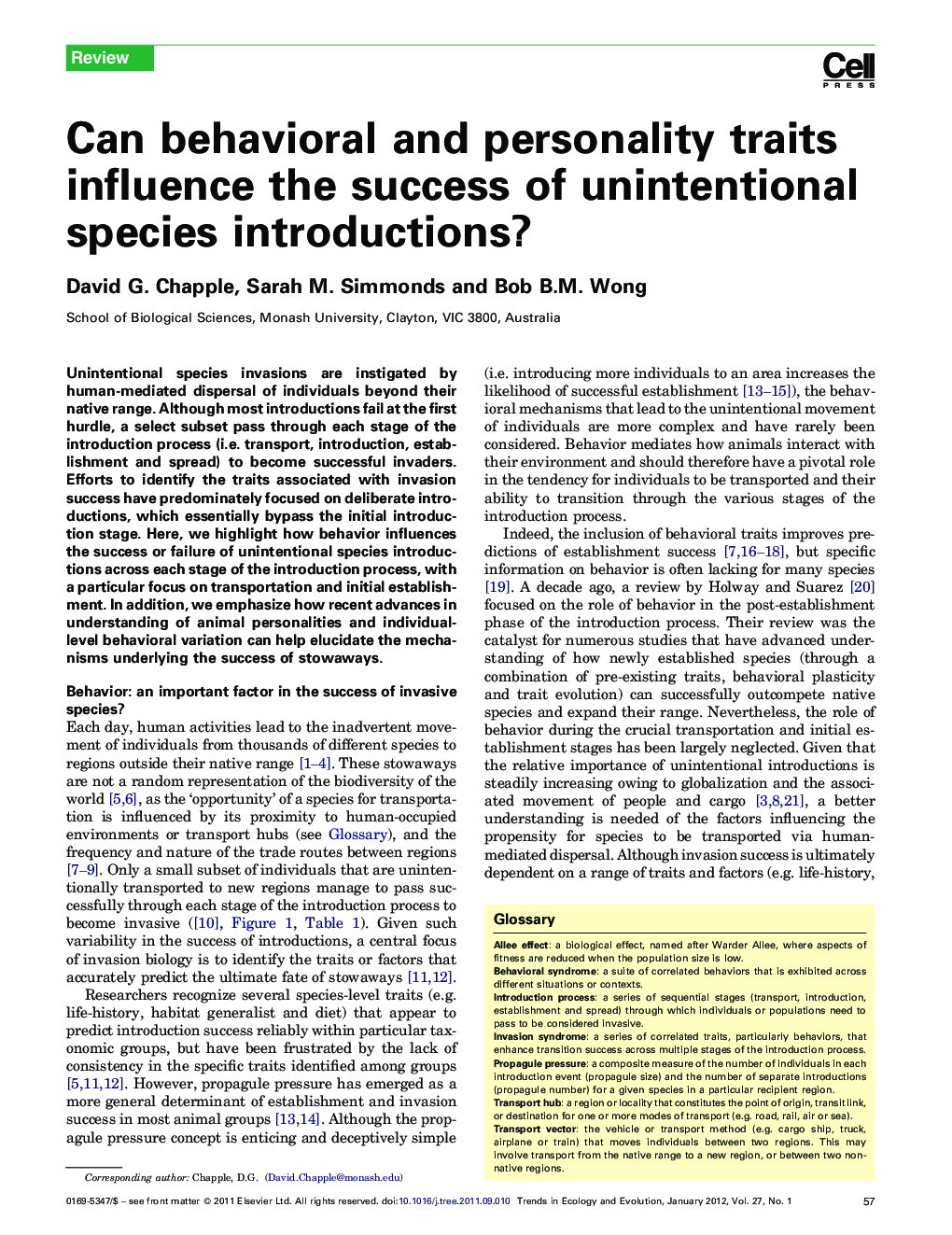| Article ID | Journal | Published Year | Pages | File Type |
|---|---|---|---|---|
| 142667 | Trends in Ecology & Evolution | 2012 | 8 Pages |
Unintentional species invasions are instigated by human-mediated dispersal of individuals beyond their native range. Although most introductions fail at the first hurdle, a select subset pass through each stage of the introduction process (i.e. transport, introduction, establishment and spread) to become successful invaders. Efforts to identify the traits associated with invasion success have predominately focused on deliberate introductions, which essentially bypass the initial introduction stage. Here, we highlight how behavior influences the success or failure of unintentional species introductions across each stage of the introduction process, with a particular focus on transportation and initial establishment. In addition, we emphasize how recent advances in understanding of animal personalities and individual-level behavioral variation can help elucidate the mechanisms underlying the success of stowaways.
